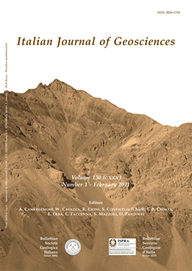
The 1963 Landslide and Flood at Vaiont Reservoir Italy. A tsunami ball simulation
Steven N. Ward(*) & Simon Day(**)
(*) Institute of Geophysics and Planetary Physics. Earth and Marine Sciences Building. University of California, Santa Cruz, CA 95064 USA - ward@es.ucsc.edu; http://es.ucsc.edu/~ward.
(**) Aon Benfield UCL Hazard Research Center, University College London.
Volume: 130 (2011) f.1
Pages: 16-26
Abstract
We apply the recently developed «tsunami ball» method to construct a physics-based simulation of the 1963 Vaiont Reservoir landslide and flood disaster. Previous tsunami ball applications restricted attention to landslide-generated sea waves and local runup. For the first time, we expand the approach to include overland flows and floods in a dam-break like situation. The Vaiont landslide was not a debris avalanche, but rather a semi-coherent slump. The slump versus avalanche distinction is embodied with a 2-D variation of a particulate landslide model. With proper adjustment of landslide parameters, we find that a slump of dimension and volume consistent with observations can indeed slip from the south slope of the reservoir, splash water ~200 m up on the north slope, spill 30 million m3 of water over the dam and flood the valley below - all as were recorded in that day's events. Incorporating runup and flood information with geological data provides additional insight into the kinematics of the landslide. The observed distribution of inundation requires that the eastern part of the landslide begin to move before the western part, so trapping and pushing more water over the dam than would otherwise have been the case. As aids for visualization,
this paper includes links to Quicktime movies of the simulations, including a three dimensional «fly by».
Keywords
Get Full Text